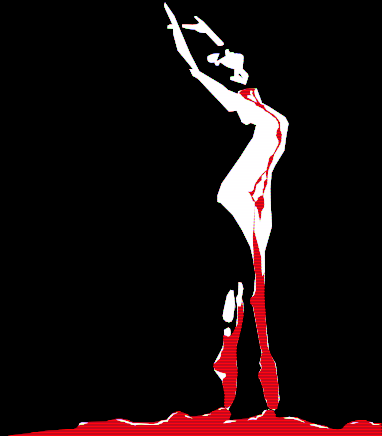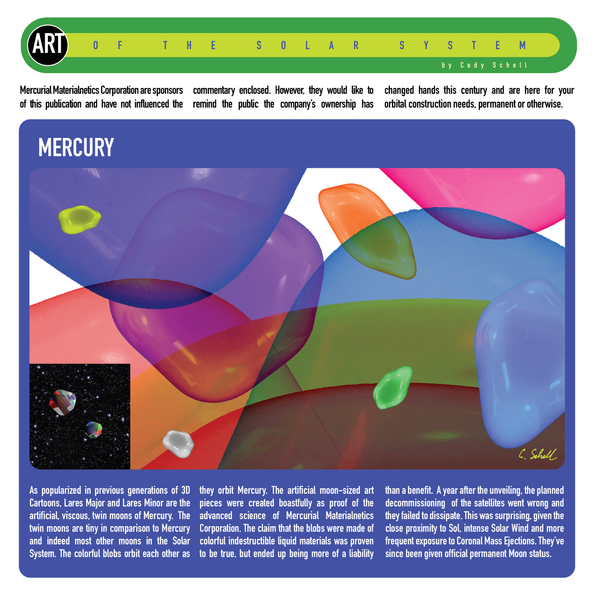A Personal History of Horror Films in 101 Quirky Objects #76: Sara Simms’s notebook in Suspiria (1977)

by Vince Stadon
“Suzy, do you know anything about... witches?” – Sara Simms
I’ve always found it a bit odd that, given it’s a medium of moving images, cinema—particularly Western cinema—favours storytelling above all else. Weird films with little regard to narrative are the preserve of the arthouse. Which is to say that a film as breathtakingly visceral as Suspiria is only ever given its due with caveats that none of it makes any sense. Critics really don’t like things that make no sense. But I do. I find narrative to be low on my criteria for enjoyment, so you won’t find any excuses or caveats here. I argue that the reason Suspiria is wonderful absolutely because it doesn’t make any sense whatsoever. Nightmares aren’t supposed to make sense. And if Suspiria is anything, it’s a nightmare.
Nightmares take you to very odd and unsettling places, and there’s nowhere more odd or unsettling than Dario Argento’s head. He’s a director who insists on holding the knife that has stabbed hundreds of female characters to death in the most gruesome ways possible (Suspiria may take the crown here, with the gratuitous and cartoonish shot of a knife goring into a exposed still-beating heart as it pumps out lurid red paint). He would later cast his own daughter Asia* in close-to-soft-core-porn sex scenes. It's easy to suspect a strain of misogyny in his work (and many have), but I think the jury is still out. I think he’s a director interested in creating moods through sickening violence and slick, artistic photography, and that these films by necessity require lots of women characters to be sliced up because that comes with the territory.
In any case, Argento’s giallo films (ostensibly violent thrillers) are as unsettling as his supernatural horror films, as they all come from the same well. Suspiria could well be a giallo about a young American student uncovering the mystery of who is murdering fellow students (and a blind male piano player) at her German dance school, but even so I suspect it wouldn’t pay much attention to logic. Student Sara is Nancy Drew’ing by keeping notes in her notebook (or are they first murder victim Pat’s notes?), and some lip service is paid to an investigation, but you can’t investigate a nightmare. Investigations need logic and rules and facts and evidence, and none of those things matter in a nightmare about an American girl being directed by an Italian madman in a German school of dance populated by French women dubbed into English who are being terrorised and murdered by a coven led by an ancient Greek super witch.
The nightmare, then, is European, which means Goblin prog rock blasting out over scenes of taxis speeding through lashing rain and as a soaking wet young woman flees in terror through a German forest. And a blind man enjoying a stein of beer with thigh-slapping Bavarian male dancers in lederhosen before he’s mauled gorily to death, Hound of the Baskervilles-style, by his own guide dog in a deserted square at midnight. And it might be that this death occurs as the shadows of witches on broomsticks are cast onto the buildings; like many things in Suspiria, it’s unclear. And these are two of the least bizarre deaths in the film. That the death-by-dog scene occurs in Königsplatz, where Hitler rallies and book burnings took place during the Third Reich, just adds to the nightmare.
It's the colours that scare me the most, though. We associate horror with winter darkness, shadows, and things-glimpsed-in-the-gloom, but it’s so much scarier to have your senses assaulted with every room painted in bright reds and deep blues and for colour to be washed over scenes or to come from seemingly nowhere, even when you’re sat in the back of a taxi racing through a storm. Argento has said he was influenced by the technicolour of early Disney and especially Snow White and the Seven Dwarfs (1937), and you could make a case for Suspiria being a nightmare you might have after watching the Disney film for the first time on a plane to Munich or Rome.
Argento’s then-wife and co-screenwriter Daria Nicolodi has said she wanted all the girls at the dance studio to be around thirteen or fourteen-years old—the same age as Snow White. It’s difficult to say if this idea was completely rejected, given the occasional scenes of prepubescent behaviour by some of the female characters in the film, but even so it’s a disturbing thought to imagine Dario Argento’s hairy arm wielding a dagger that slices up Snow White as she spurts red paint, and in the background the dwarfs grin rictus grins and burn books banned by the Third Reich, as old Greek witches laugh with mouths dripping with maggots, and murdered girls dance to weird pounding prog rock from Italians who may or who may not be misogynists.
Sometimes that’s how I think that’s how Suspiria works: by getting you so weirded out that you start imagining everything in the way Suspiria feels. Somewhere in all this weird feeling nightmare is a narrative (supposedly inspired in part by an essay from 1845 called Suspiria de Profundis – “Sighs from the Depths” – by Thomas de Quincey), but even Sara with her notebook, and plucky Suzy Bannion from America, cannot find it, and nor could they ever find it, and nor should they… because you don’t always need narrative to be brilliant and that’s one of the reasons why Suspiria is one of my favourite films, without any caveats.
* In 2017, Asia Argento made allegations of having been sexually assaulted by Harvey Weinstein in the 1990s. A year later, allegations emerged that Asia Argento had sexually assaulted actor Jimmy Bennett in 2003, when he was legally a minor under California law. In 2021, Argento alleged that director Rob Cohen had drugged and raped her during the filming of xXx (2002).
~
More obvious picks for an object to represent this film: the peacock feather dagger; the stained-glass window; the iris flower that opens the secret door; the blinding shiny thing (whatever it is!); ballet shoes; barbed wire
Suspiria (1977); 99 mins; Italy
Directed by Dario Argento; Written by Dario Argento & Daria Nicolodi; Produced by Claudio Argento; Cinematography by Luciano Tovoli; Music by Goblin
Jessica Harper (Suzy Bannion); Stefania Casini (Sara Simms); Flavio Bucci (Daniel); Joan Bennett (Madame Blanc); Aliva Valli (Miss Tanner); Miguel Bose (Mark); Barbara Magnolfi (Olga); Susanna Javicoli (Sonia)
© 2025 Vince Stadon




